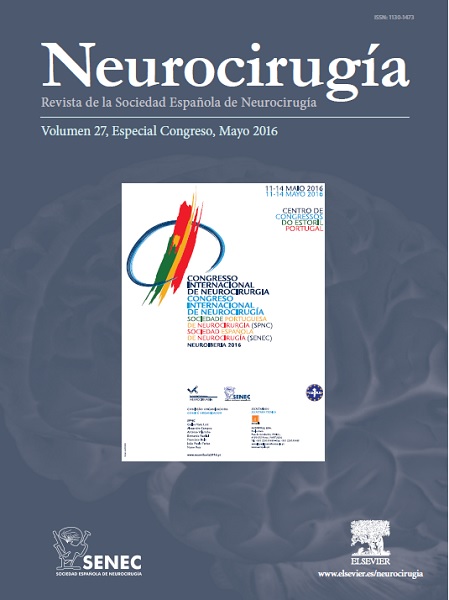O-RAQ-02 - Failure rates and complications of interspinous process decompression devices: a European multicenter study
Regional Service of Neurosurgery, Virgen de la Arrixaca”University Hospital, Murcia. Department of Neurosurgery, San Giovanni Addolorata Hospital; Department of Neurosurgery, Sandro Pertini Hospital. Department of Neurosurgery, Santo Spirito Hospital; Department of Neurosurgery, San Filippo Neri Hospital, Rome, Italy.
Objectives: Spacers placed between the lumbar spinous processes represent a promising surgical treatment alternative for a variety of spinal pathologies. They provide an unloading distractive force to the stenotic motion segment, restoring foraminal height, and have the potential to relieve symptoms of degenerative disc disease. The authors performed a retrospective, multicenter nonrandomized study consisting of 1108 patients to evaluate implant survival and failure modes after the implantation of 8 different interspinous process devices (IPDs).
Material and methods: The medical records of patients who had undergone placement of an IPD were retrospectively evaluated, and demographic information, diagnosis, and preoperative pain levels were recorded. Preoperative and postoperative clinical assessments in the patients were based on the visual analog scale. A minimum of 3 years after IPD placement, information on long-term outcomes was obtained from additional follow-up or from patient medical and radiological records.
Results: One thousand one hundred eight patients affected by symptomatic 1- or 2-level segmental lumbar spine degenerative disease underwent placement of an IPD. The complication rate was 7.8%. There were 27 fractures of the spinous process and 23 dura mater tears with CSF leakage. The ultimate failure rate requiring additional surgery was 9.6%. The reasons for revision, which always involved removal of the original implant, were acute worsening of low-back pain or lack of improvement (45 cases), recurrence of symptoms after an initial good outcome (42 cases), and implant dislocation (20 cases).
Conclusions: The IPD is not a substitute for a more invasive 3-column fusion procedure in cases of major instability and spondylolisthesis. Overdistraction, poor bone density, and poor patient selection may all be factors in the development of complications. Preoperatively, careful attention should be paid to bone density, appropriate implant size, and optimal patient selection.







